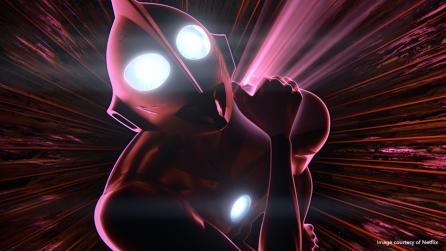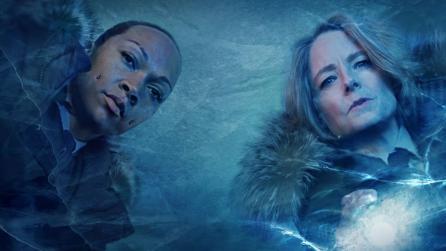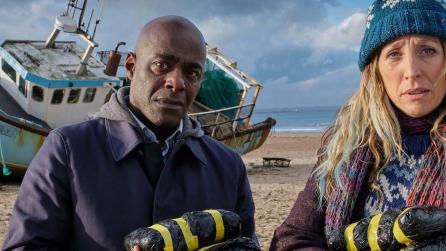Deadpool & Wolverine VFX: Behind the scenes with Framestore
Bringing together Marvel’s massive multi-vendor project.
Deadpool & Wolverine — the first R-rated film in the Marvel Cinematic Universe (MCU) — is packed with jaw-dropping VFX, with Framestore creating several pivotal scenes. Working across 450 shots, the team relied on Nuke as an essential part of its pipeline. Not only did Framestore use Nuke’s powerful toolset to create incredible effects on a highly complex project, they also used Foundry’s industry-standard compositing software as a packager to easily share assets with other visual effects vendors.
We went behind the scenes with Matthew Twyford, VFX Supervisor at Framestore to find out how the team completed Deadpool & Wolverine’s amazing VFX.
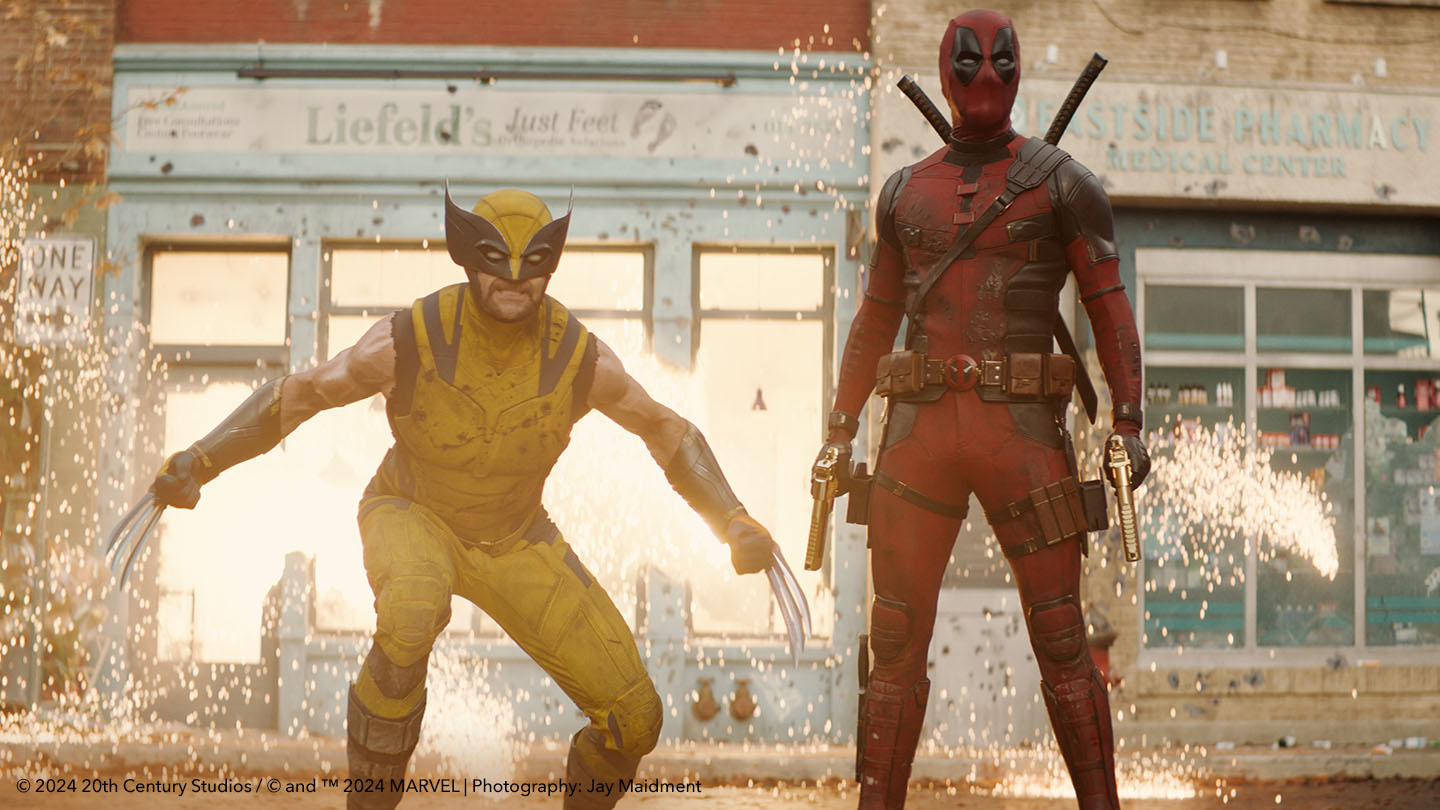
Bringing Wolverine back: The cold opener
The film’s ‘cold opener’ is one of the key sequences that Framestore worked on. The challenge here was to make what is an incredibly violent and gruesome opening scene fun and more palatable for the viewers. The team achieved this by leaning into the film’s comic book origins. The edit featured various different speeds, including bullet time and speed-ups, so that the shots look like cartoon frames from a comic. The effects simulation artists were then briefed to design the blood so that it felt like it was coming out of every frame.
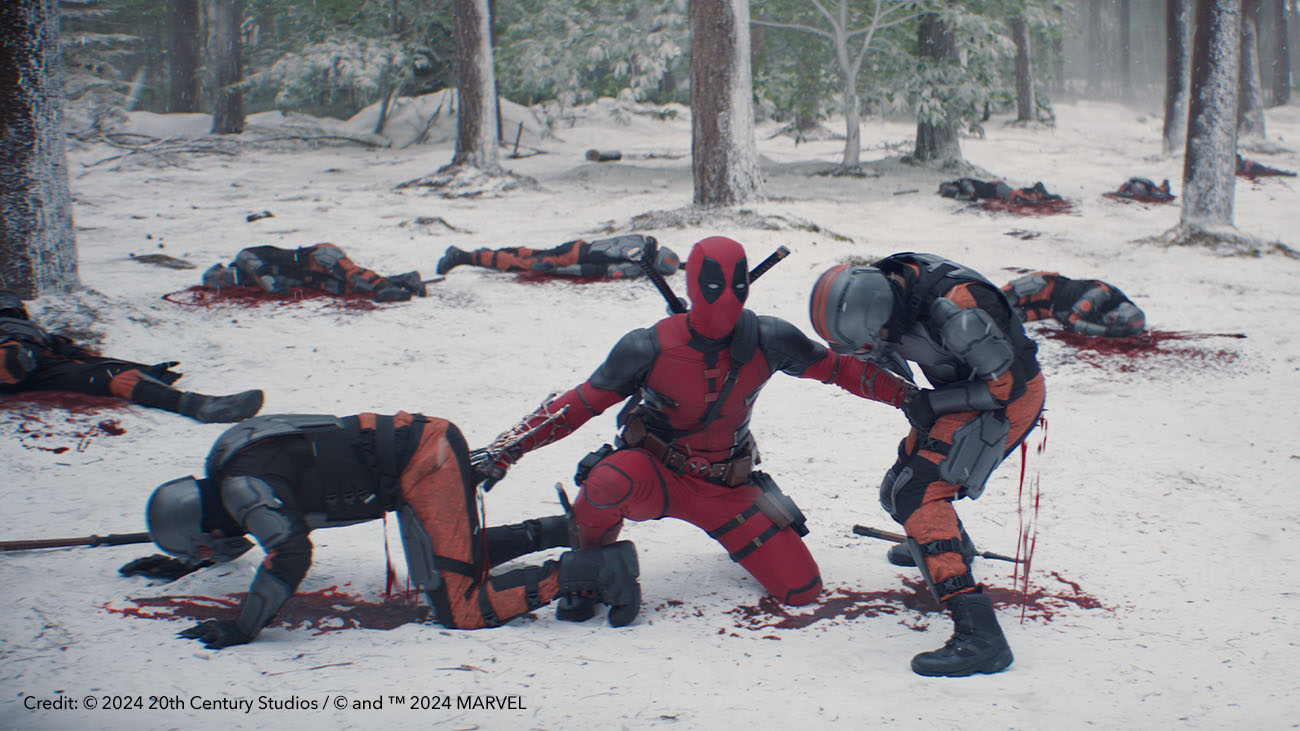
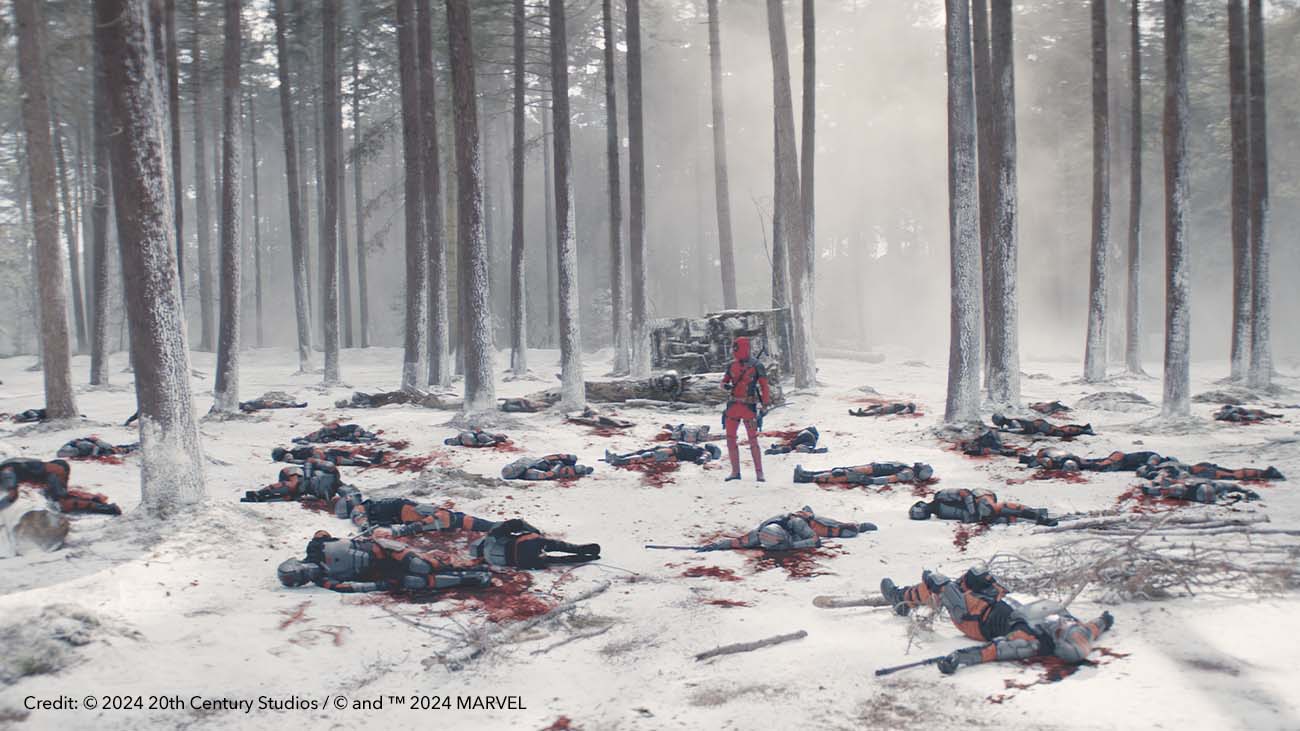
With large amounts of digital blood and debris in a white, snowy environment, the scene is much more complex than it might appear. It had to look highly stylized, while also maintaining a certain level of realism.
“We used existing styles from the movie franchise and then mixed strong composition and framing cues from the original comic book imagery,” explains Matthew.
The Oner: an epic challenge
Another key sequence for Framestore is the epic scrolling battle scene, known as The Oner. Described by Matthew as “a logistical monster”, The Oner features a massive 5,800 frames across 200 shots, with over 1,000 individual artist tasks completed.
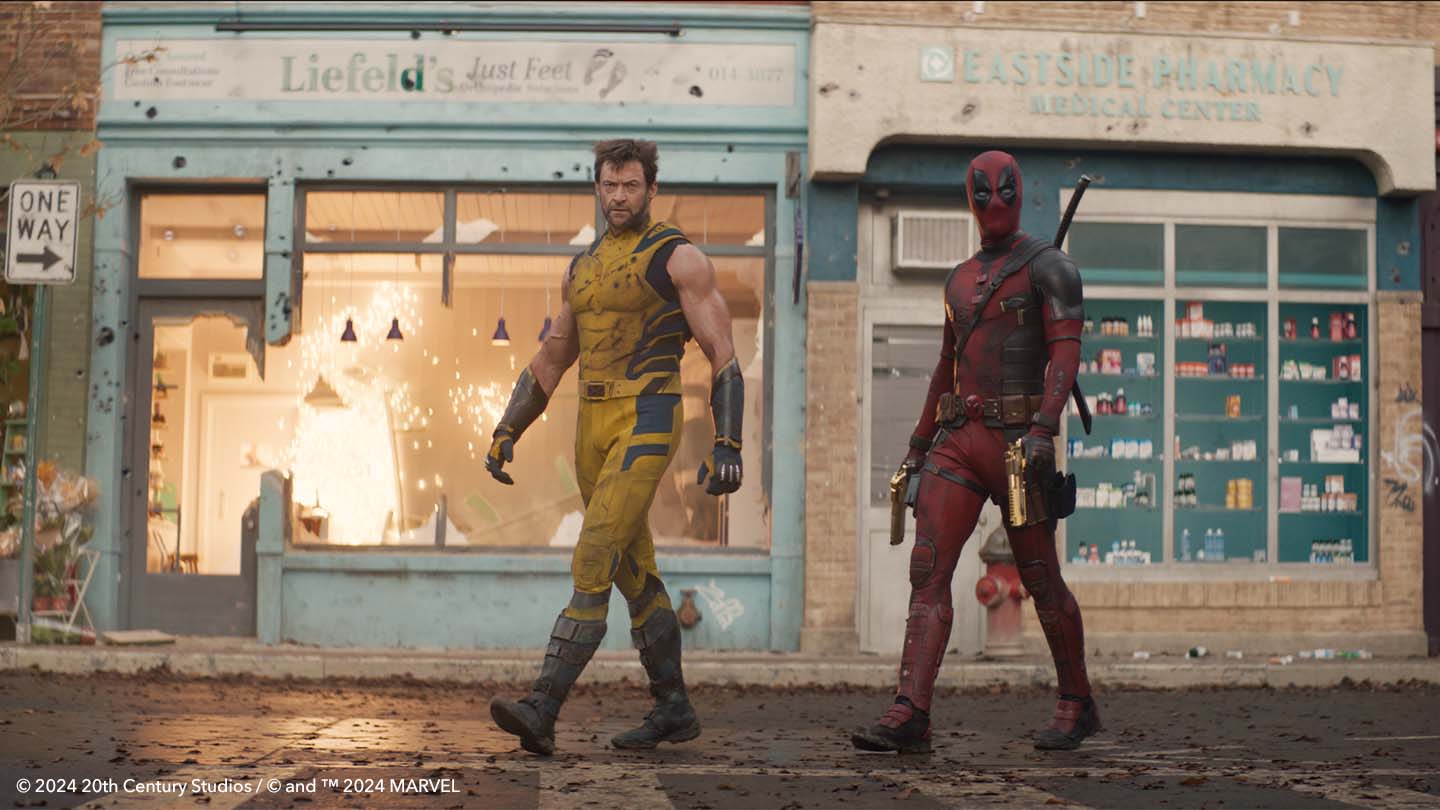
The scene was shot on the backlot at Pinewood Studios, with a New York-inspired city block featuring two-storey buildings that were extended upwards, with the streets also extended out to the horizon in post. With the outdoor shoot taking place during November and December, the reliably changeable British weather meant that almost every single shot was different, in terms of light and weather.
“The biggest challenge for the 2D guys in Nuke was to try and make all of those plates fit together as if all the action was happening at one particular moment,” says Matthew.
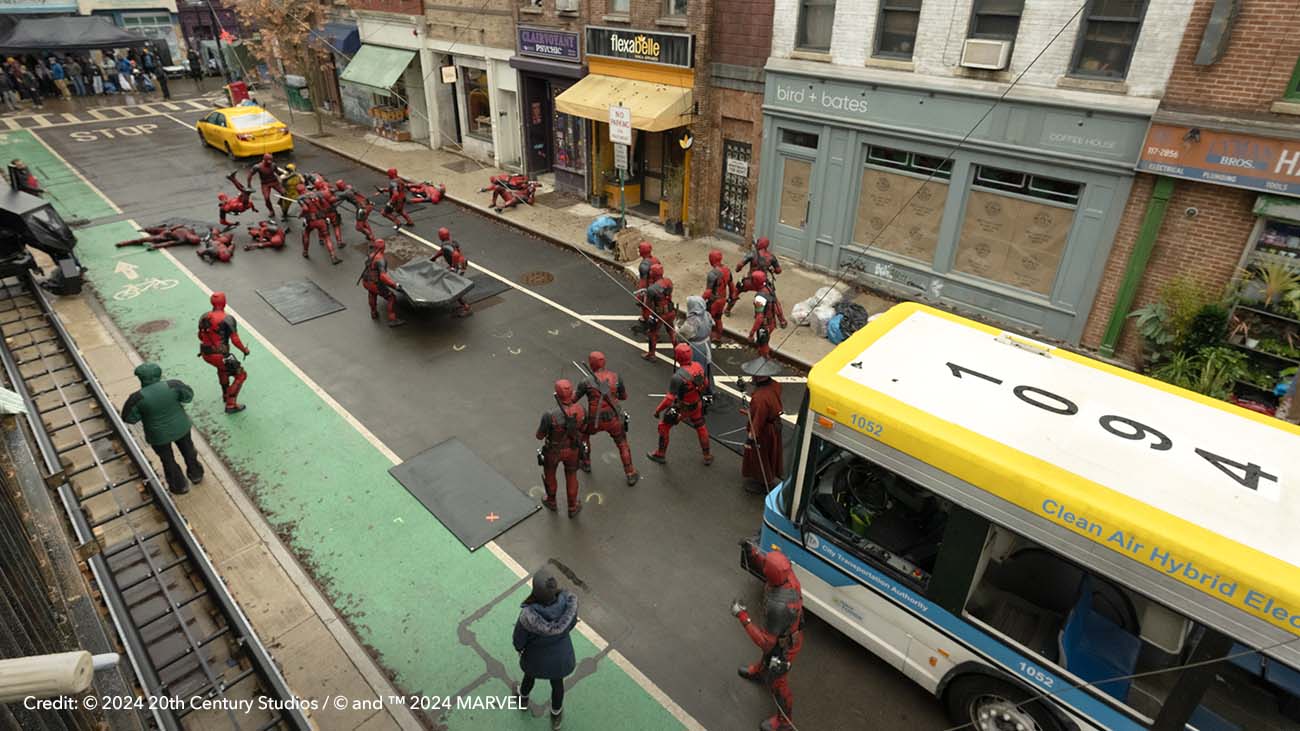
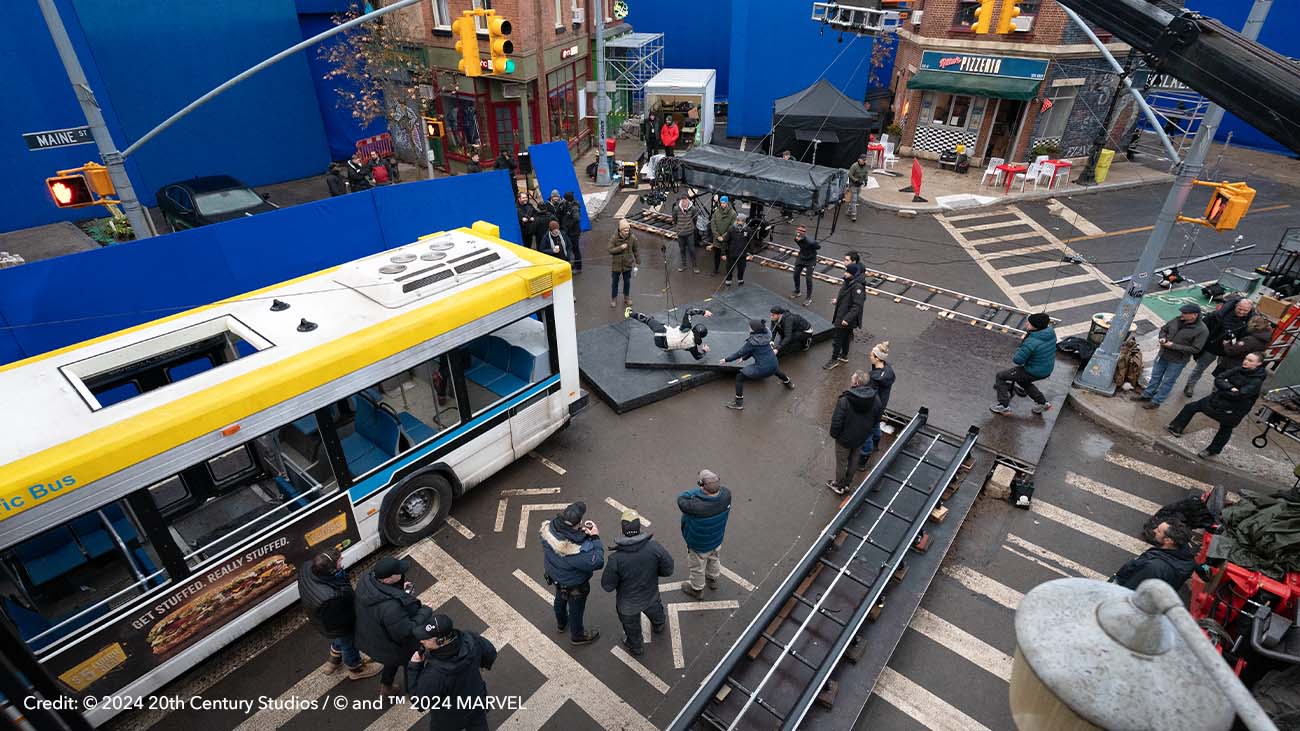
What’s more, The Oner also featured several major stunt sequences, including hundreds of individual stunts. As a result, a huge amount of clean-up work was needed in Nuke, with most of the street covered in crash mats, and the upper part of the image obscured by stunt rigs.
Building a complex scene with Nuke
Extensive blending was also needed to carry through the joins where live action characters merged to CG characters and back again. The team used a digital matte painting for the distant skyline and buildings, plus a custom-made skydome, along with a projected sphere for the distant city. All of the traffic was created in CG, along with the people.
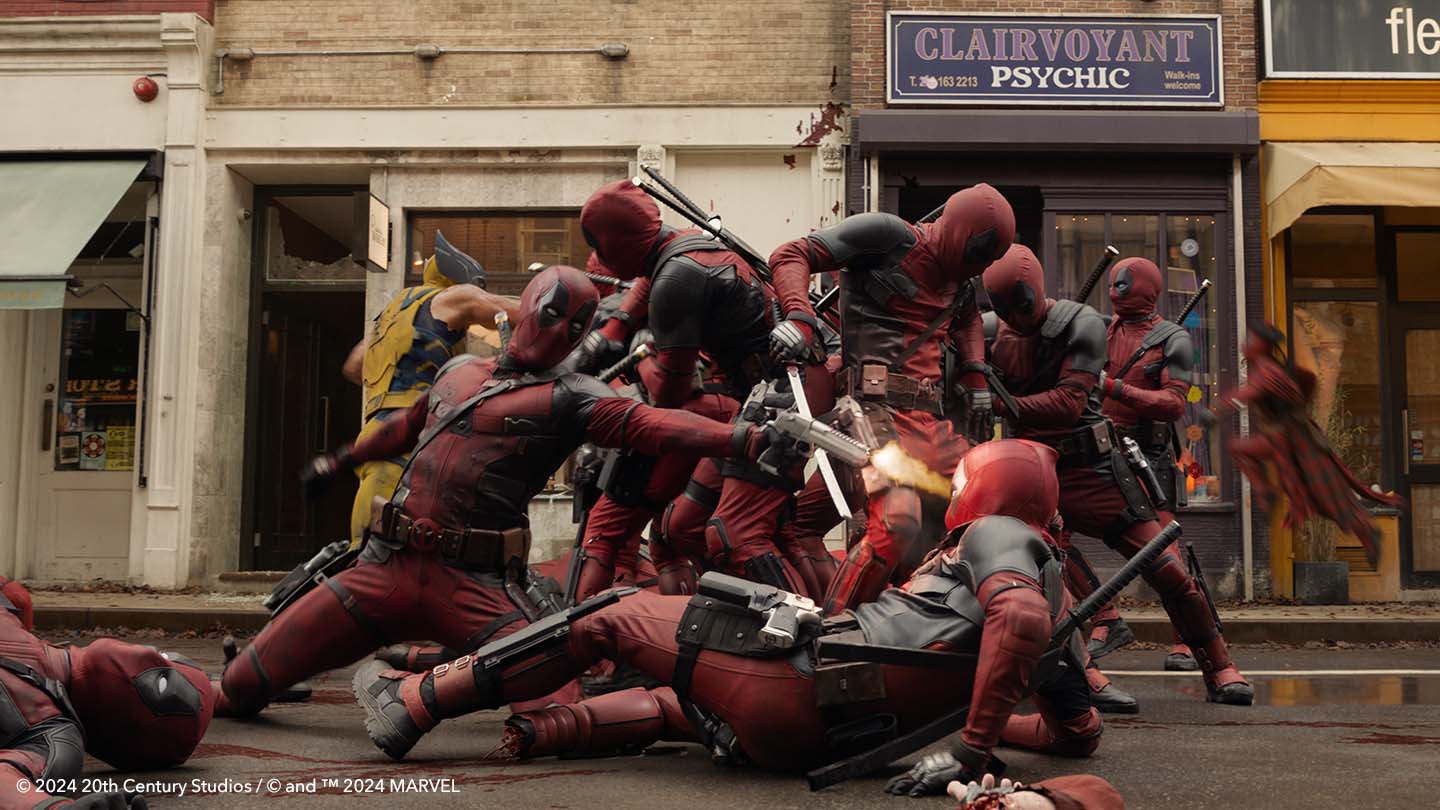
“We had to do some very clever stuff to create believable shadows and reflections on the 2D cards to match them with the CG characters,” explains Matthew.
“We've got a crowd replication system that enables us to drop 2D cards of blue screen characters into our CG environments. On Deadpool & Wolverine, the crowd characters were custom-shot, then dropped in using the Particle System in Nuke, driven by the 3D geometry.”
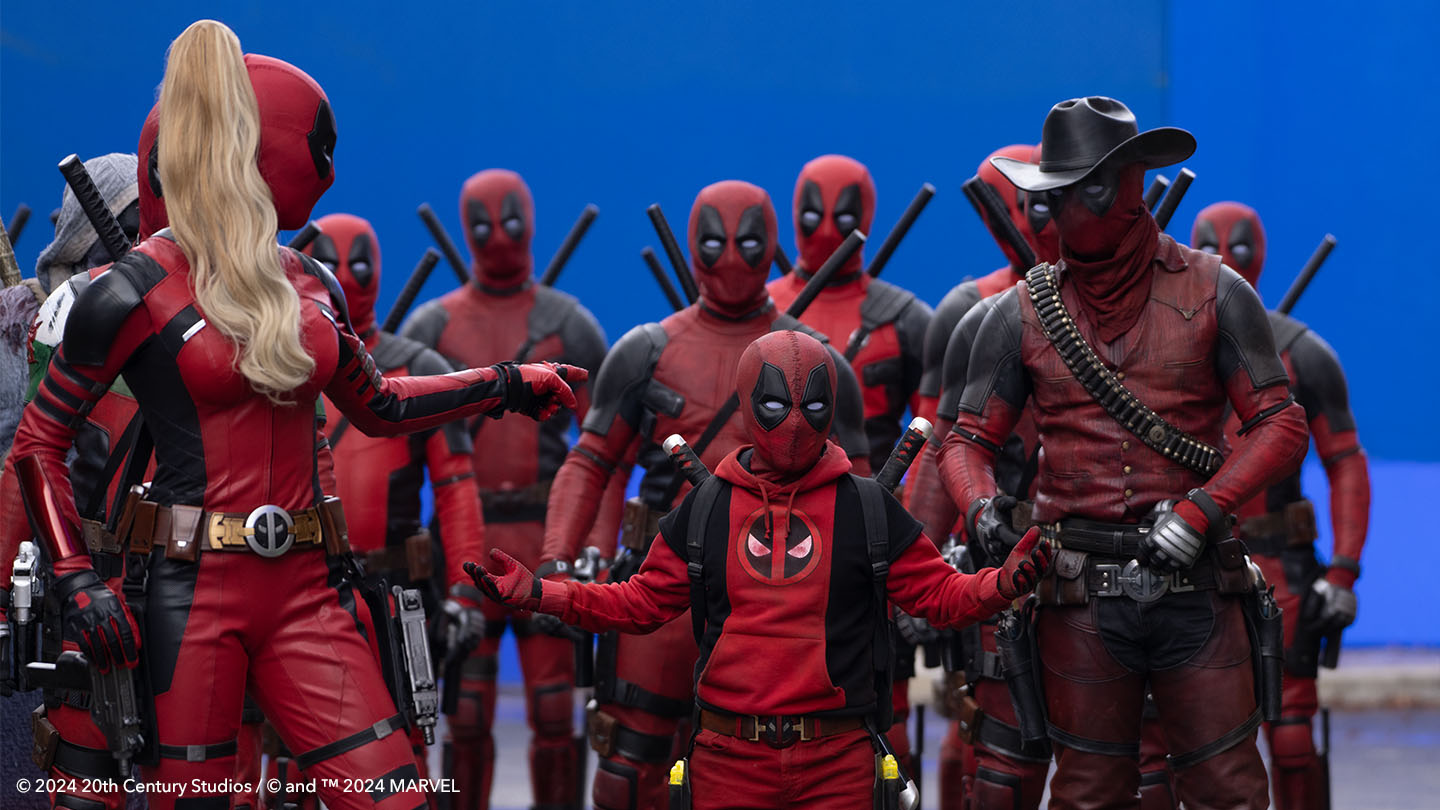
The street lights were rendered in 3D, and then run using procedural programming in Nuke to reflect real street logic, functioning as usable traffic lights. The Deadpool Corps — consisting of scores of Deadpool variants from alternative universes — was mostly shot on set.
Dealing with huge amount of data
With so many elements to bring together, there were thousands of layers to deal with. Four full-time compositors worked across The Oner over nine months, along with 20–30 compositing artists working intermittently on a variety of tasks. With a huge amount of data to manage, the scene presented an enormous compositing challenge, and Nuke’s ability to support large, complicated Scripts was essential.
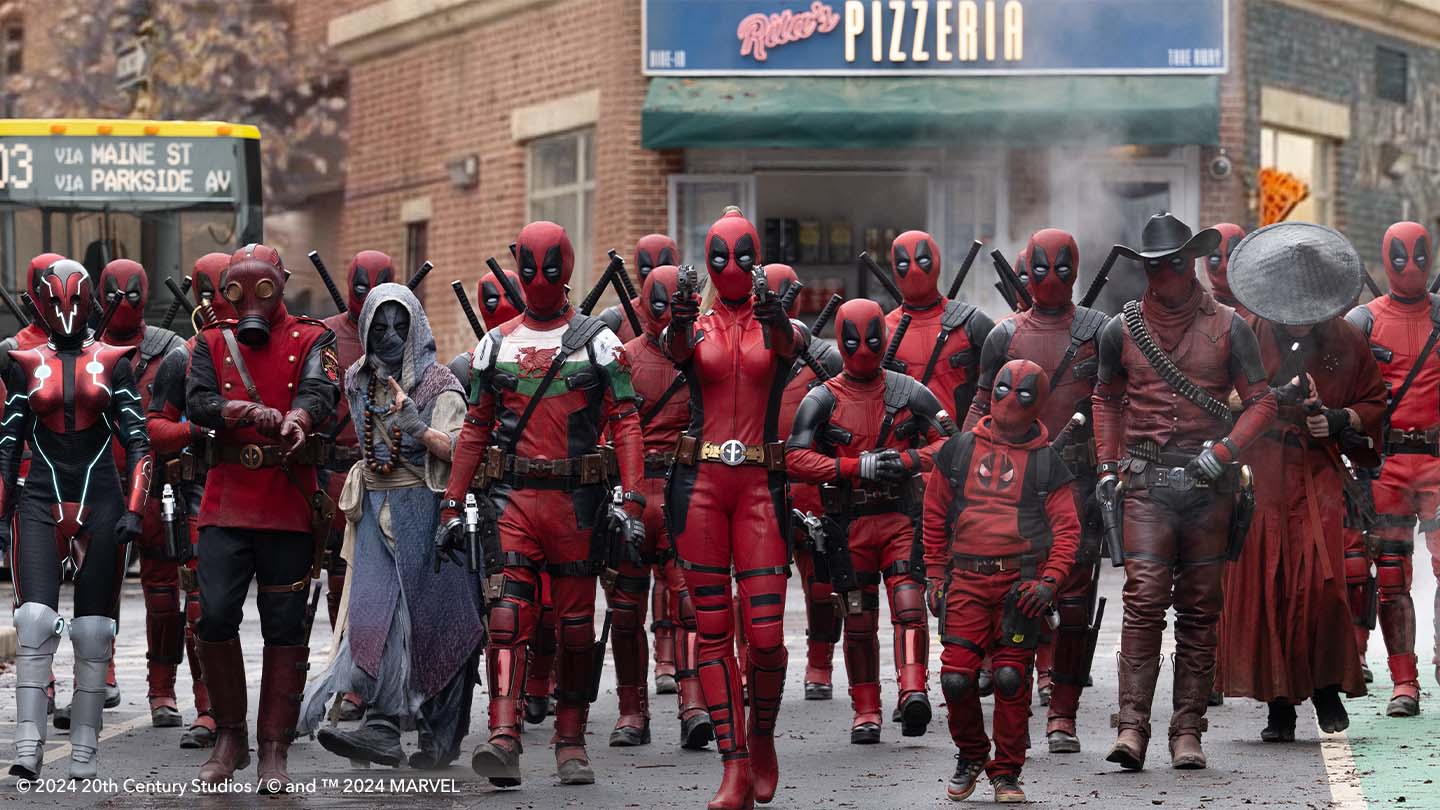
The team also made use of Nuke’s Deep Compositing capabilities. “We have deep data coming out from all our CG renders as standard, so our artists can choose to comp in Deep or not,” says Matthew. “Deep data is a powerful tool to have when you have a combination of 3D assets, 2D assets, and plates all swapping front to back continuously during the shot.”
Enhancing Dogpool with Nuke
Framestore also helped to complete the look of Dogpool, a tiny hairless dog sporting a mini Deadpool costume. Played by Peggy, a canine actress who holds the dubious honor of being ‘Britain's Ugliest Dog’, Dogpool sports exaggerated CG eyes, under a pair of goggles, which Framestore created. Peggy gave an impeccable performance on set, so the team got most of what was needed in camera, with the slightly cartoonish eye enhancement meaning that they could give the character more presence.
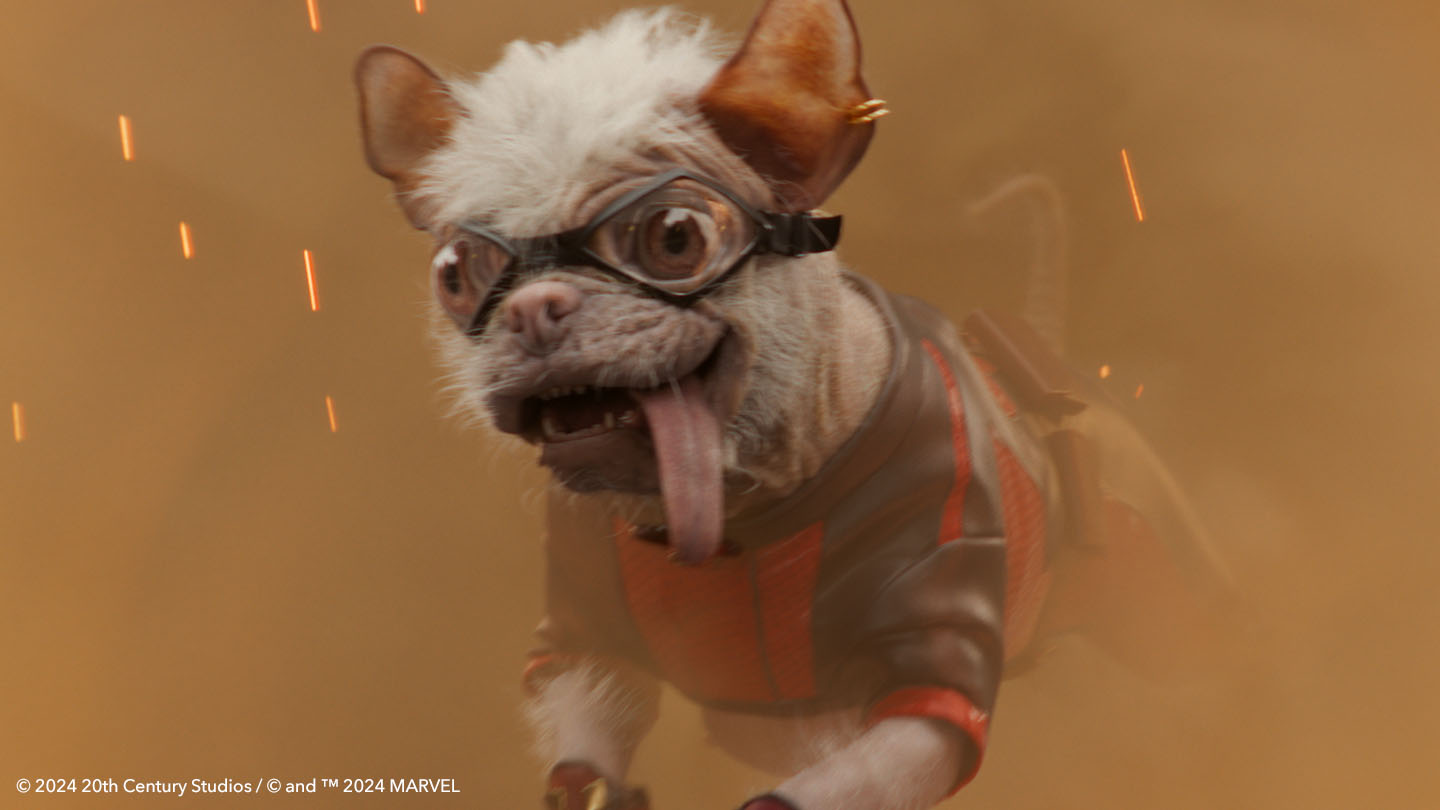
The Comp team’s work in Nuke was essential in seamlessly blending the CG elements with the plates while fine-tuning the animation to maintain a realistic look.
Building the Time Ripper finale
Framestore also handled Deadpool & Wolverine’s climactic ‘Time Ripper’ sequence, including the ‘spaghettification’ effect that the team developed for the second season of Loki.
“Marvel always likes to find new visual languages,” says Matthew. “But the studio has a vast historic legacy that we need to embrace and integrate with the new so that everything works logically within the MCU (Marvel Cinematic Universe).”
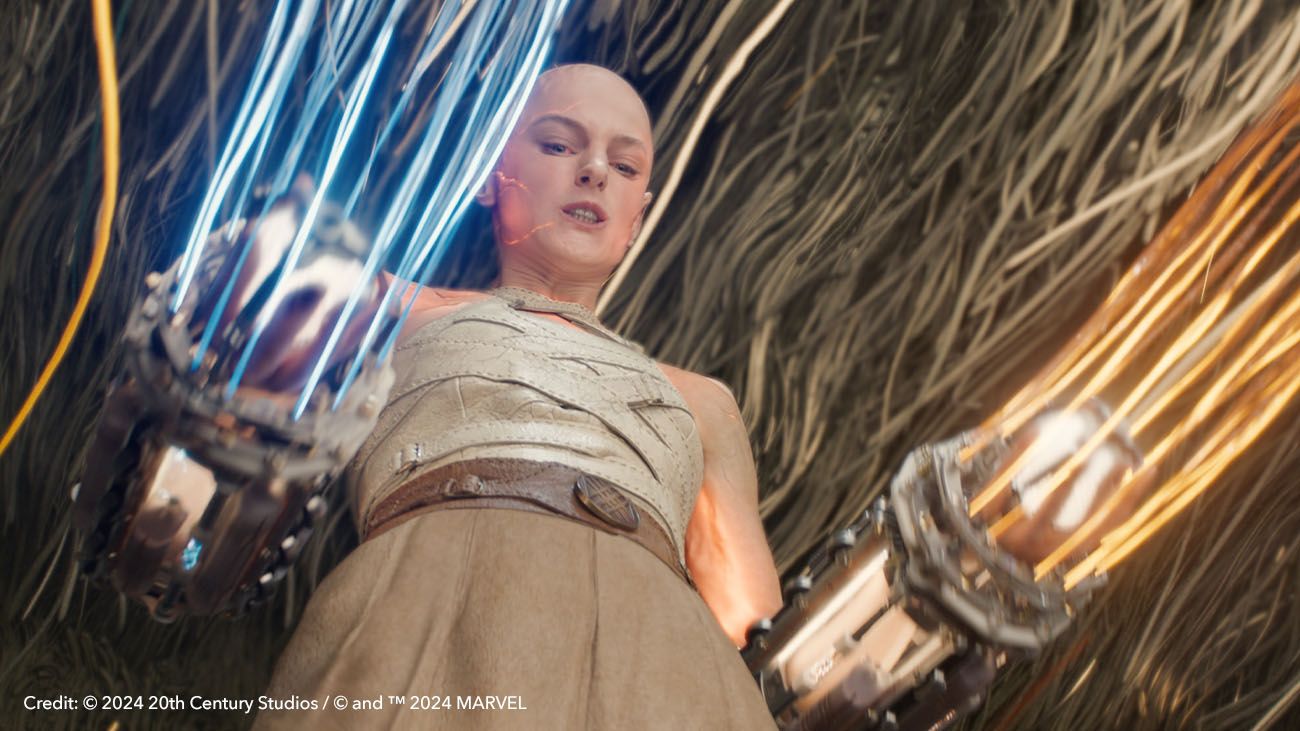
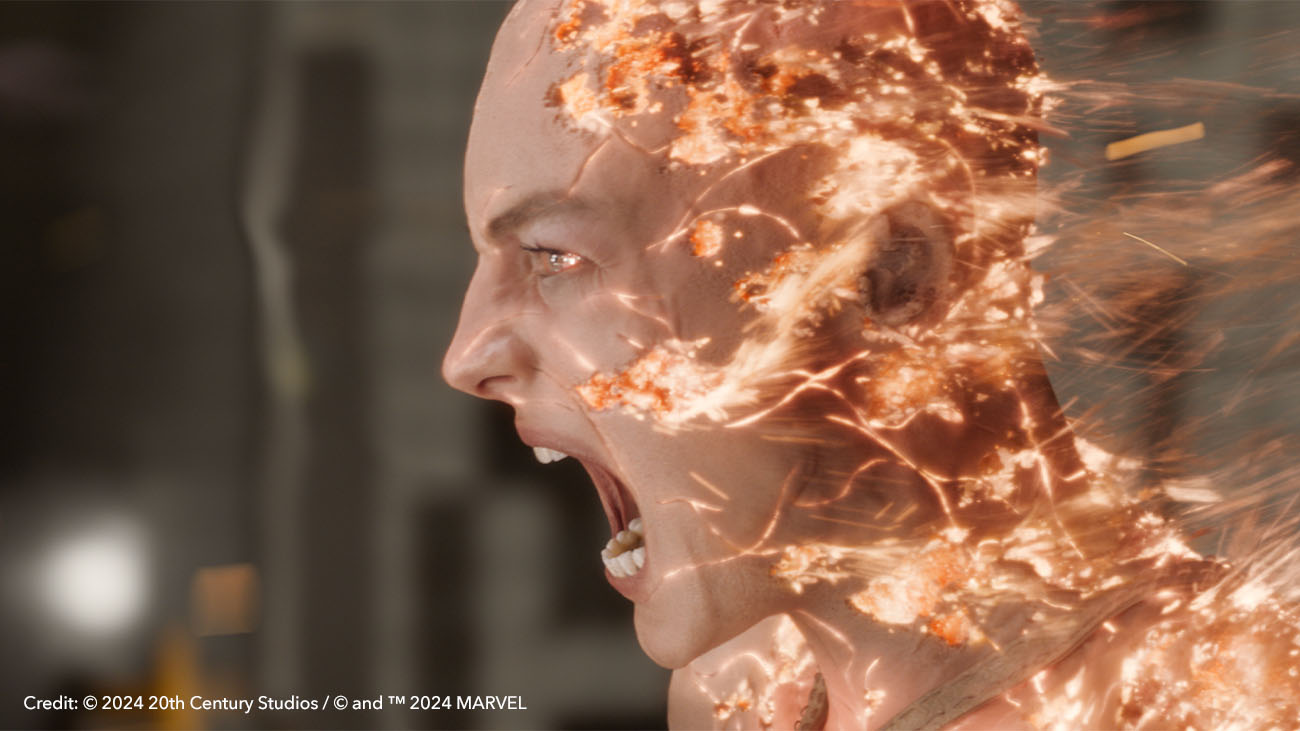
The need to create something totally new for the effects-heavy Time Ripper sequence gave the team a lot of creative control over the multiple environments, characters, and props involved. As you’d expect from the third act in a Marvel movie, there’s a lot happening at once, which meant a big challenge for the VFX artists. In contrast to The Oner, the sequence features a lot of shorter cuts, with some being only four or five frames long.
Adding to the complexity, the three characters involved — Cassandra, Deadpool, and Wolverine — all have regenerative powers, but they react in different ways.
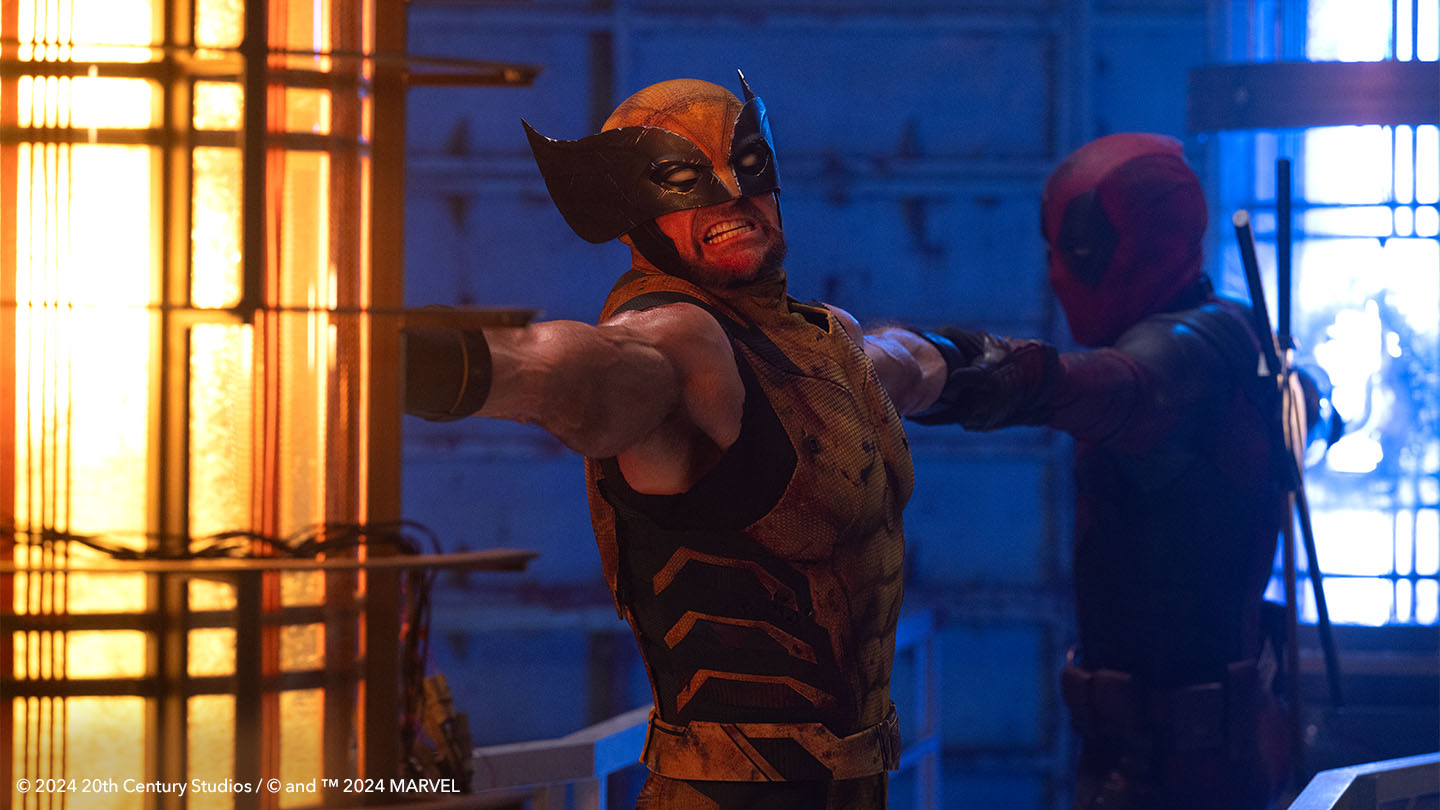
“A lot of the Wolverine effects — including the burning under the skin, the cracking, the glows, and the heat — was developed by the 2D team in Nuke, and then the effects team enhanced the effects in 3D,” says Matthew. “We have a long and successful history of using our compositing artists and tools like Nuke for new look development.”
Sharing assets with Nuke
As a truly collaborative effort, some sequences involved multiple vendors, with the cold opener including work from as many as four different VFX studios. And even the Framestore team itself worked across five global sites on this project. With large projects like Deadpool & Wolverine increasingly requiring a multi-vendor approach, the ability to easily share assets between studios is becoming more important.
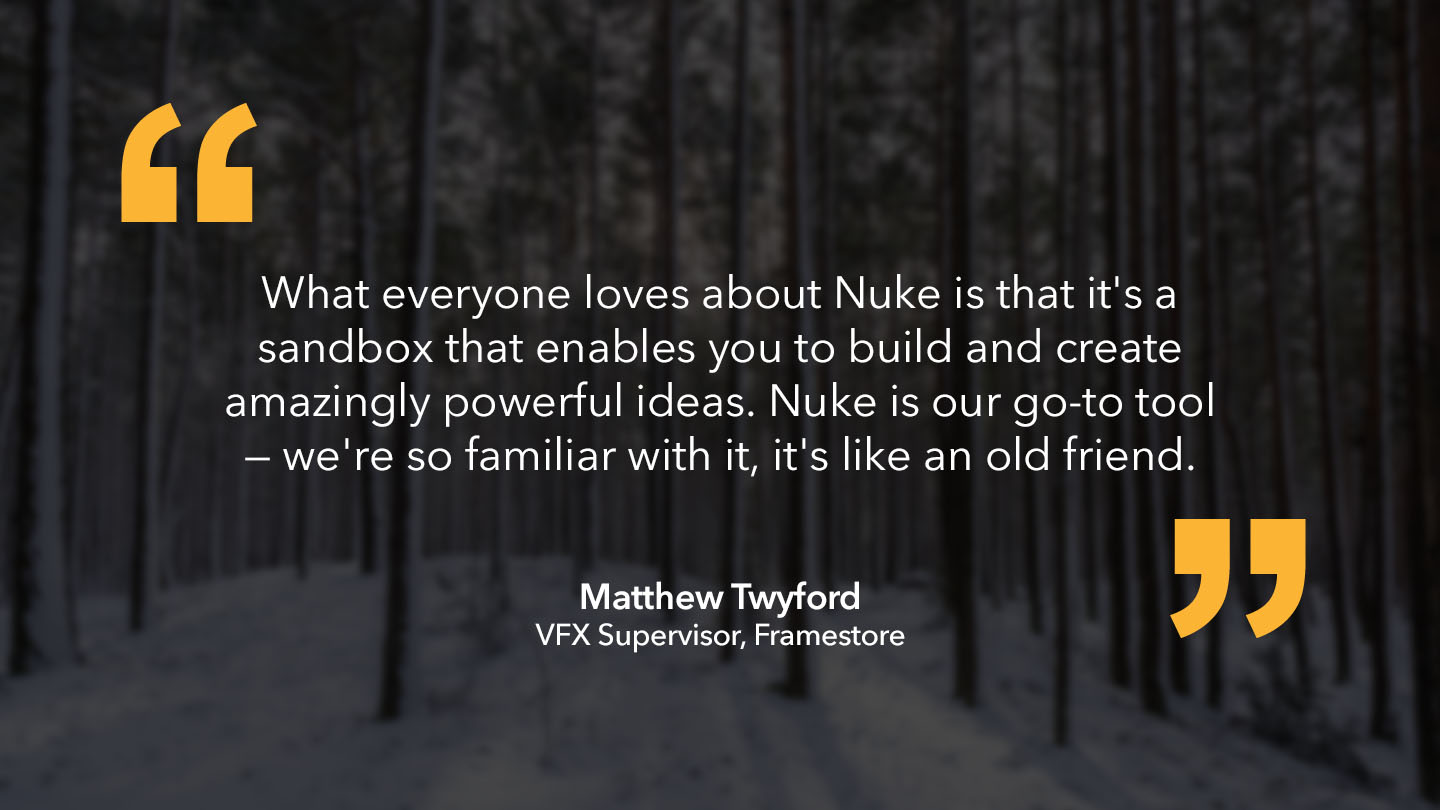
“This is very much the direction we think everyone should be going in, because everything is becoming more collaborative,” says Matthew.
“We've got Nuke Scripts that take all of our proprietary elements and convert them down into base units again so that we can share assets easily with other VFX vendors. This has been so successful that we actually use Nuke as a packager now, enabling us to share everything from geometry, and camera, to roto, plates, and LUTs. And because all of the vendors have Nuke, everyone understands everything that’s in there.”
Nuke-powered pipeline
As an integral part of Framestore’s pipeline, Nuke helped the team to complete this incredibly complex Marvel project to the studio’s usual high standards.
“Deadpool & Wolverine is one of the most enjoyable shows I've ever worked on, with room for a huge amount of creativity for all of the teams,” says Matthew. “What everyone loves about Nuke is that it's a sandbox that enables you to build and create amazingly powerful ideas. Nuke is our go-to tool — we're so familiar with it, it's like an old friend.”
“Our compositors are a very powerful creative force at Framestore. More than half of the VFX supervisors are ex-compositors, so they know how much we can expand the creative envelope. Putting flexible tools like Nuke into the hands of such a team allows us to push it in amazing directions.”
Want to unlock your creative power and try your hand at creating similar effects? Browse our library of Nuke tutorials on Foundry Learn to level up your skills.
